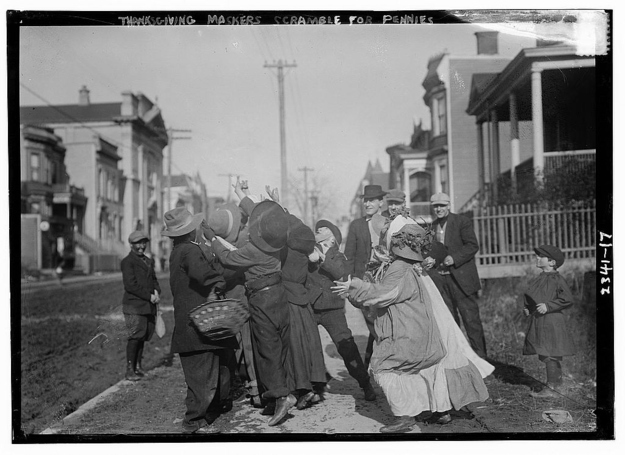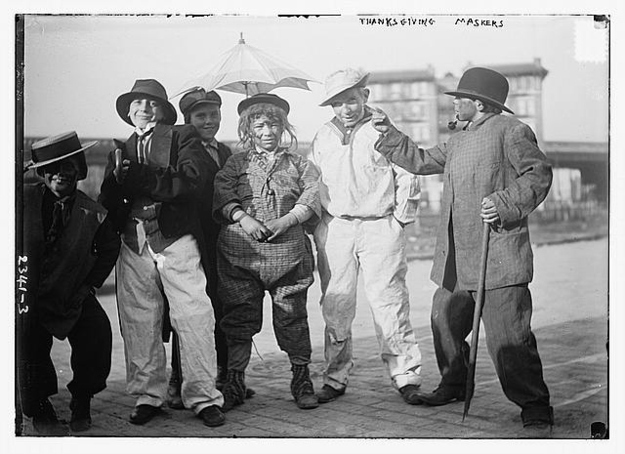Believe it or not, there was a time in American history when the familiar pastime of going door to door wearing masks and disguises was an activity associated with Thanksgiving, not Halloween.
The tradition seems to date back to the 1870s when poor Americans in the northeastern United States would go from house to house, begging for something to eat. This was soon adopted by young children, later known as ragamuffins, who would dress in rags and masks and go door to door on Thanksgiving morning and ask, “Anything for Thanksgiving?”

By the 1890s the celebration had become so popular, many referred to Thanksgiving as “Ragamuffin Day.” Children and adults alike would don costumes and participate in masquerade parties and street parades. According to an item in the Los Angeles Times in 1897, Thanksgiving was “the busiest time of the year for the manufacturers of and dealers in masks and false faces. The fantastical costume parades and the old custom of making and dressing up for amusement on Thanksgiving day keep up from year to year in many parts of the country, so that the quantity of false faces sold at this season is enormous.” (NPR) Instead of candy, children would often receive coins.

As America moved into the 1900s, the tradition became more frowned upon. The pastime was regarded as “an abominable custom, amounting to a public nuisance… it is unmistakably a survival of an ancient if grotesque ceremony whose meaning has been forgotten.” (Strange History: When Thanksgiving Was More Like Halloween“) Some Americans despised the tradition so much, they’d heat coins on the stove and throw “red pennies” into the streets to see children get burned when picking them up.

Once the Depression Era of the 1930s set in and families struggled to keep their own children fed, there was little interest in giving hand outs to strangers. The tradition faded even further when New York school superintendent William J. O’Shea organized costume contests and civic events to discourage youngsters from pestering adults for gifts. By the 1950s, the celebration of Ragamuffin Day had vanished. The custom of costumes and going door to door for treats shifted to Halloween, and Thanksgiving evolved into the family-oriented day of feasting that we enjoy today.
We’re fans of both holidays. Halloween and Thanksgiving each come with their own unique values, traditions, and entertainment. Both holidays provide an opportunity to be with the ones you love, enjoying and celebrating life.
For more information, visit: Mental Floss, Gothamist, and NPR.

One thought on ““Anything for Thanksgiving?”: A Time When Thanksgiving Was More Like Halloween”